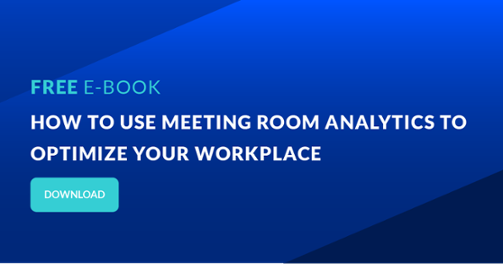It’s been yet another busy week at the office.
Your firm has been bustling with activity and everyone has been hard at work wrapping up several big client projects.
Or have they?
Now that it’s time to send out invoices, you’re realizing how many hours have been whiled away at lunches, in meetings, and completing administrative duties instead of actually utilized on billable, client work.
Utilization rate is a critical metric for measuring a professional service firm’s health and potential for growth. Keep reading to learn everything you need to know when it comes to measuring your utilization rate correctly, applying it efficiently, and growing it to increase your organization’s productivity and profitability.
What Utilization Rate Means and How to Calculate It
Utilization rate is the percentage of an employee’s total working hours that are spent on work that can be billed to a client.
To find an employee’s utilization rate for a specific period, you need to know the total number of hours worked and how many of those hours were billable.
Unsurprisingly, not every second spent during a project is billable because for your firm to function, a flurry of administrative tasks needs to happen. Subtract these hours that can’t be billed to a client from the total number of hours worked to find your billable hours.
With your billable hours and total hours calculated, here’s the formula you’ll use to find an employee’s utilization rate as a percent:

Let’s put it to practice by looking at how your fictional in-house graphic designer, Elizabeth, spent her 40 hours at work this week.
Here’s where her non-billable time was spent:
- Lunch: 5 hours
- Admin tasks (dealing with emails, billing time, etc.) 2 hours
- Weekly organization-wide meeting: 1 hour
- Staff training: 1 hour
That’s 9 hours of non-billable time at work and 31 of billable. So calculating her utilization rate would look like: (31 billable hours)/(40 total hours worked) x (100)/(1) = 77.5%.
Pretty cool, right? Now, let’s talk about why all that math should matter to your firm.
Why It’s Important to Measure Utilization Rate
Measuring utilization rates is vital because it empowers organizations to optimize resource allocation, manage costs effectively, make informed strategic decisions, boost workforce productivity, enhance employee satisfaction, foster collaboration, plan resources efficiently, and contribute to sustainability efforts.
In the context of meeting and workspace management, understanding how often spaces are used and for what purposes is paramount for ensuring efficient operations, cost savings, and a productive, satisfied workforce while aligning with modern workplace trends and corporate responsibility initiatives.
Set Profitable Prices
Having a strong grasp on utilization is important for professional service firms because it allows them to charge a fair and profitable hourly fee for services rendered.
Finding your ideal billing rate takes a lot of factors into account:
- Overhead costs
- Labor costs
- Ideal profit margin
- Average labor hours across the entire firm
- Capacity utilization rate
- Overhead costs: $20.000
- Labor costs: $100.000
- Ideal Profit Margin: 20%
- Total Average Labor Hours (entire firm): 2.000
- Capacity Utilization Rate: 77.5%

But before you’re able to make a complete calculation, you need to know how to identify average labor hours and capacity utilization rate, right? Here’s how to find average labor hours:

Capacity utilization is also an average, so you’ll use a similar formula for that:

To keep it simple, let’s say that there are 5 total people at your firm, everyone works the same 2,000 hours per year, and their utilization rate is the same as Elizabeth’s at 77.5%.
Plugging those numbers into our formula, we get: [(20,000 + 100,000 + 24,000) / 2,000] / 77.5%
Which comes out to an ideal hourly rate of $93 per hour to reach a 20% profit if everyone stays at the same number of hours work and utilization rate.
Determine Your Ideal Utilization Rate
Above, we used the organization's capacity utilization rate to determine an optimal hourly charge. However, this assumes one thing—that the organization has a healthy capacity utilization rate.
If we were to do the same equation with half the capacity utilization rate, the hourly billable rate would have to skyrocket in order to make a profit.
So this time, we’ll start with an ideal hourly rate and profit margin and work backward to see what our capacity utilization rate would need to be to make it a reality.
Let’s use the same numbers from the above example, but set our ideal billable rate lower at $85 to better align with industry standards.
Here’s the formula we’ll plug our numbers into:

With the numbers in, we get: (20,000 + 100,000 + 24,000) / (2,000 x 85) = 85%.
So, to hit your 20% profit goals while charging $85 an hour, everyone in your firm would have to average a utilization rate of 85%.
Hire More Effectively
Utilization rates also empower organizations to assess individual and group productivity, revealing top performers and prevalent skill sets. This valuable data aids in strategic hiring decisions, ensuring the recruitment of talent aligned with client needs and high-utilization skill sets.
Furthermore, it supports talent recognition and development, fostering motivation, and enabling targeted skill enhancement where needed. Ultimately, utilization analysis enhances workforce efficiency and organizational performance.
Boost Profitability
Monitoring utilization rates is a valuable strategy for enhancing profitability. It helps identify clients or projects that consistently fall below the ideal utilization rate, signaling potential mismatches in client needs and service offerings. By recognizing these situations and making informed decisions about realignment or discontinuation, your firm can prioritize profitable clients and projects, ensuring a strong revenue stream.
Additionally, utilization rate insights pinpoint operational inefficiencies, leading to improved resource allocation and overall profitability, enhancing client satisfaction and long-term financial success.
Improve Organizational Health
Utilization rates extend beyond financial matters; they play a crucial role in maintaining employee well-being and fostering a positive workplace culture. Striking the right balance is essential.
A sky-high utilization rate can be a red flag for impending burnout, which can negatively impact your employees' physical and mental health.
Conversely, a significantly low rate may signal the need for improved training or a potential mismatch between an employee and their role.
By monitoring utilization rates, you can proactively address these issues, ensuring your team's job satisfaction, mental health, and overall organizational health remain robust. A healthy work environment, characterized by balanced utilization rates, promotes employee engagement and a vibrant company culture, driving long-term success.
How to grow your utilization rate
Understanding the pivotal role that utilization rates play in the success of your professional services firm, it becomes imperative to explore effective strategies for their growth. Elevating your utilization rate not only translates to increased profitability but also enhanced productivity and overall organizational success.
In the following sections, we will delve into a range of strategies designed to help you harness the full potential of your team, optimize resource allocation, and maximize billable hours. Whether you're looking to fine-tune your existing practices or embark on a transformative journey, these insights will provide you with actionable steps to elevate your utilization rate and drive your firm's success to new heights.
Track time spent on different tasks
If you want to increase your overall utilization rate, understanding where people are spending their time is the first step.
With the advancement of technology, firms have moved from the days of analog punch clocks to more convenient time tracking software. Some software can even be incorporated right into the platform the individual is using to detect and track time spent on different tasks!
You might be surprised how much time is going into non-billable tasks like data entry, tracking down resources, attending training sessions, planning for and organizing meetings, and more.
Once you know how your organization is spending time on non-billable tasks, you can get to work eliminating them wherever possible so you can spend more time on the billable stuff.
Cut down on downtime
Every hour your employees are at work, they’re getting paid—whether or not you’re able to pass that expense onto a client is up to you.
Cut down on downtime that isn’t spent toward administrative or client tasks and watch your utilization rate grow.
Here are some areas you can focus on to eliminate too much costly free time:
- Sales: With more clients and projects on the roster, everyone will have more billable work to do.
- Skills: Be sure your team’s skills are up-to-date so you’re not turning away valuable projects or burning through a ton of non-billable project time on last-minute training sessions.
- Project management: Are tasks being distributed in a way that utilizes the team’s skills in the most productive way?
Provide Baseline Utilization Rates
Benchmarks are helpful for workers to understand how they’re performing against expectations and how they can improve with time. So one great way to increase the utilization rate of your firm or employees is to establish a baseline goal that is feasible for your organization or each of the departments in it.
Earlier, we found our ideal capacity utilization rate, now it’s time to put that to work to become or inform your goals, provide resources to reach it, and host regular check-ins to help employees succeed.
Also, a pro tip for using baseline utilization rates is to set both minimum and maximum benchmarks. This helps keep performance, organizational health, and revenue at optimal levels.
Ready to utilize your utilization rate?
As we’ve covered today, your utilization rate is vital to the health of every professional service firm’s culture, revenue, and bottom line. We hope our ultimate guide to measuring your utilization rate correctly, applying it efficiently, and growing it effectively helps you increase your organization’s productivity and profitability.




